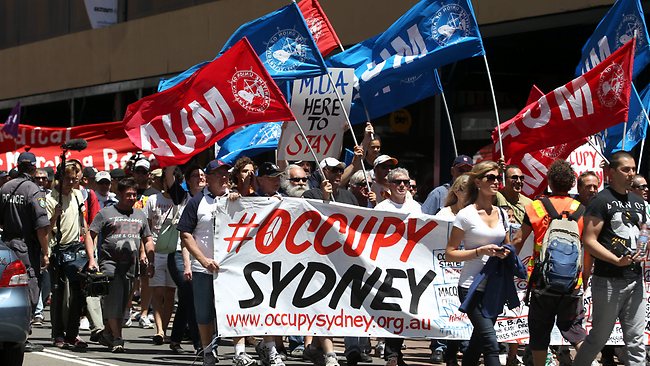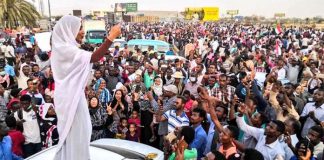It’s widely acknowledged that inequality is growing. Behind this is the enormous wealth and power of a tiny minority—the capitalist ruling class, argues Miro Sandev
It is common to hear these days that social class no longer really exists, or if it does then it has radically changed. It’s not like the old days of factory workers and capitalists, you often hear. Workers have superannuation and own houses, some people say, meaning that the “proletariat” that socialists like Karl Marx talked about is gone.
But the truth is that the class divide is starker now than ever, and the working class is now bigger than it has ever been as a proportion of the world’s population.
The world’s eight richest billionaires own more wealth than the poorest half of humanity, 3.6 billion people, according to Credit Suisse, one of the biggest global banks. Inequality is inherent to the capitalist system and is something Marx predicted 150 years ago.
The same report revealed that the wealthiest 1 per cent in Australia own more wealth than the poorest 70 per cent combined. The number of billionaires in Australia has grown to 76, up by 16 in the last year alone.
Rising inequality, particularly over the last two decades, has seen the gulf between the wealth held by the top 1 per cent and the bottom 50 per cent now the greatest at any time over that period.
Inequality in terms of income, whether from wages or investments, is also rising. The income of the top 1 per cent has doubled since the 1980s, to 8.3 per cent of the total, while the bottom 20 per cent have just 7.5 per cent of income.
And there’s no sign of this slowing, with the Turnbull government passing income tax cuts heavily weighted to the richest in society. The top 20 per cent will receive 60 per cent of the money handed back in tax cuts, if the full plan is implemented. Turnbull tried to justify the cuts by decrying the plight of police superintendents, who pay too much tax apparently. The base level salary for a police superintendent is $154,412, triple the amount an average worker earns.
Turnbull also wants to slash the tax on corporate profits for his parasite mates in the banks and big business.
The banks, who have been fleecing their customers, as the Royal Commission is showing, will get a handout of $7.4 billion.
It will rip out $80 billion in total from funding over ten years that could go to schools, hospitals and other useful things.
Transformed
Capitalism has certainly been transformed since the time of Marx. Then, capitalists tended to own most of the private property directly—as single owners of factories for example. Later came the emergence of joint-stock companies, with the capital split among a number of shareholders. This is the dominant mode of ownership now.
A small number of massive corporations dominate the Australian economy. The top 100 companies control 40 per cent of Australian GDP, with a further 20 per cent controlled by the government sector.
The big four banks control 80 per cent of banking, three telco companies hold 90 per cent of the mobile phone market and two supermarket chains have 70 per cent of that market.
Some people try to claim that because some workers own shares this makes them capitalists as well as workers, and so class doesn’t matter as much anymore.
But the truth is that a tiny percentage of the population own the vast majority of the shares. Dyer’s research from 2003 published in Business Review Weekly showed that 86 per cent of shares were held by the wealthiest 10 per cent of families. This same top 10 per cent owned 62 per cent of rental properties, 60 per cent of cash deposits and 50 per cent of business assets.
Another study similarly showed that the number of people who derive their income from property ownership was very small in Australia. The top 20 per cent of Australians owned 72 per cent of all property and the bottom 50 per cent owned only 1.6 per cent of all property.
The vast majority of the population derives almost all their income simply from their capacity to work. This is the working class.
There is another group of people classed as “self-employed”, but they only make up around 17 per cent of the population. And a portion of these are actually workers, because many people are illegitimately classed as independent contractors by their bosses, such as in construction.
Marx described the capitalist class as those who own or control the means of production—in other words owners and managers of large private and public enterprises.
But who are they?
Owners
The super-rich have all amassed their wealth through the ownership of major companies. The major owners of the means of production in Australia are the financiers, property developers, manufacturers, media moguls, pastoralists, wholesalers, retailers and the mine owners among others.
Australia’s richest person is cardboard manufacturing owner Anthony Pratt, with an obscene $12.9 billion under his belt.
He owns Visy, a cardboard box manufacturer and recycling company in Australia and the US. He has been a strong supporter of Donald Trump, spruiking his huge corporate tax cuts as a win for ordinary people. Trump, in turn, has lavished praise on Pratt, giving him a standing ovation when he decided to build more factories in the US.
Property developer, Harry Triguboff, is the second richest person in the country. He owns Meriton, which builds apartment towers. Unsurprisingly, he is a big supporter of increasing house prices, and keeping interest rates low so there are more people looking to buy.
Two more billionaires on the top ten list are Andrew “Twiggy” Forrest and Gina Rinehart, both in mining. Along with other mine owners they bankrolled a scare campaign about the former Labor government’s mining profits tax, which would have returned some of their ill-gotten gain to the public purse. The campaign succeeded in scaring the government into a dramatic backdown.
Rinehart has also bought stakes in media companies like Ten and Fairfax. At Ten, she was a strong supporter of right-wing attack dog Andrew Bolt.
Directors
Many of those who run companies on a day-to-day basis are effectively salaried managers, including CEOs and directors, rather than people who start out owning companies themselves.
There is a very small group of people who form an interlocking network on the boards that run Australia’s top companies. In 2016 only 109 non-executive directors accounted for 245 seats, or 37 per cent of the total, on the boards of the top 100 companies. Those at the top of the list held five directorships at the same time.
A few well-known figures can give a sense of who these people are. David Gonski was the architect of the Rudd-Gillard government’s education policy, which entrenched public funding for private schools and also continued neo-liberal policies like standardised testing.
He made his name as an investment banker. At various points he has been on the boards of Coca-Cola, ANZ, Westfield, Fairfax, Transfield and Singapore Airlines. He was a close friend of the media mogul Kerry Packer and was a director of his company Consolidated Press. Gonski took over the chair of the Australian Government Future Fund from David Murray in 2012.
David Murray, who is a rabid climate sceptic, was CEO of the Commonwealth Bank for over 13 years. He was recently appointed AMP chairman after the company’s former chair Catherine Brenner was forced to resign amid the scandal that emerged at the Banking Royal Commission. Brenner, like Gonski, was also on the board of directors of Coca-Cola for over ten years.
Brenner is also a director of building company Boral, a notorious union buster that is pursuing the construction union for millions of dollars in fines and damages.
This small group of people mostly went to the same private schools and universities and are members of the same exclusive social clubs. The business media even talk about them as “the directors club”.
The way CEOs and directors get bonuses and improve their lot in life is by increasing the exploitation of the workers they supervise. While these people may not own much capital directly (although some of them do), the fact they run companies in the ruthless pursuit of profit makes them align their interests with those that do actually own them.
These two groups of people make all of the major business decisions that have decisive impacts on our economy and society.
They decide how workplaces are run and have the power to hire people as well as close down firms and sack tens of thousands.
Their investment decisions determine what is produced, how it’s produced and their decisions about prices determine who can afford these things.
They decide whether new technologies are introduced and whether jobs are lost because of it. When they threaten to pull investment out, they can blackmail governments into doing their bidding.
It is its ownership of the capital, along with control of the state, which gives the ruling class its power. It uses capital to foster political and social projects that entrench its position, like funding political parties, think-tanks, social organisations and media.
The capitalists themselves are not ordinarily the main politicians that sit in parliament. Malcolm Turnbull, with his $185 million, is an exception to that.
The main political parties pander to the interests of the capitalist owners because the state they run is dependent on them for revenue and jobs.
If we want to get rid of inequality, exploitation and racism, and deal with climate change it’s not enough to just vote in more left-wing politicians. We will have to take control of the source of the capitalists’ power: their private property.






